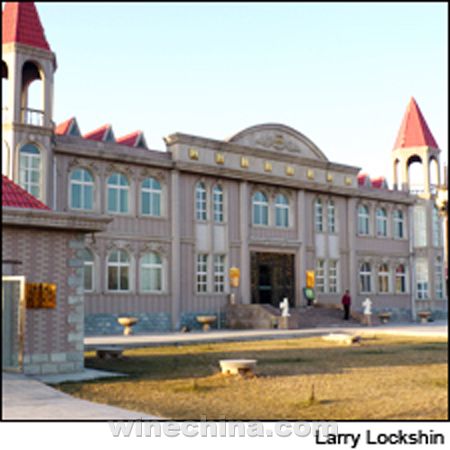Chinese Wine Region Establishes Classification Modeled on Bordeaux's
Date£º
2014-02-14 13:44 Source£º
winespectator Author:
Liz Thach Translator:
Ningxia hopes to encourage quality and grab attention by creating a ranking of estates

China's Bacchus winery is one of 10 Ningxia estates to make the first cut in the region's new classification system
As China tries to build a domestic wine industry and grapples with the inevitable growing pains, one region is adopting measures in an attempt to guarantee quality. Ningxia, which has grabbed some attention as a promising spot for Cabernet Sauvignon-based blends, recently introduced a winery classification system. Modeled on the Bordeaux 1855 Classification, but with updated rules and a required renewal every two years, it ranks wineries in five levels. The organizers hope the system will recognize and encourage Ningxia wineries that consistently produce high-quality wine and assist consumers in making an informed selection.
Located in central China, about a two-hour flight from Beijing, Ningxia currently has more than 100 wineries. In 2013, a group of international wine experts including viticulture specialists and educators conducted the first wave of the classification, judging participating wineries by quality of wine, quality of vineyards and quality of tourist activities at the winery, including restaurants and lodging. The judges selected 10 wineries as fifth-growths. In 2015, participants will be evaluated again and some may be promoted to fourth-growth; in 2017 some may be able to earn the rank of third-growth, etc. The goal is that in eight years there could be wineries classified in all five levels. If quality doesn¡¯t remain high, wineries will be bumped back a level or dropped from the classification.
In order to be considered, wineries must make at least 4,166 cases and farm at least 13 acres of vineyards. In addition, they must adhere to Ningxia winemaking regulations, which state that at least 75 percent of grapes must come from the region and 85 percent must be of the same variety and from the same vintage listed on the bottle.
The 10 wineries that earned fifth-growth status in the 2013 classification were: Xixia King, Chateaux Yuanshi, Helan Qingxue, Bacchus, Yuange, Changyu Moser XV, Lanyi, Yuhuang, Leirenshou and Chengcheng.
According to experts following Chinese wine, this type of quality-assurance system could have an impact. ¡°Launching a classification system can promote and protect the reputation of Ningxia wines and works somewhat like a firewall against possible food-safety risks from lower-quality wineries," said Dr. Qin Ma, a professor from the China Agricultural University.
Chinese consumers are growing increasingly concerned about the safety of their food. And another problem the classification hopes to counter is fakes. While fake Bordeauxs in Chinese stores have grabbed attention, fake Chinese wine is also a problem.
Ningxia has shown promise but, like most wine regions in this relatively young modern winemaking culture, it faces several challenges. A lack of quality vineyards until recently may be the biggest. The Ningxia government has brought in viticulture experts from Italy, France, the U.S. and Israel to provide advice.
Ningxia has made its name on Bordeaux varieties, and focuses primarily on Cabernet Sauvignon, Merlot, Cabernet Franc and the local Gernischt grape (also called Chinese Cabernet or Cabernet G). But some wineries are also producing Rieslings and Chardonnays. ¡°Since we are a new wine region,¡± said Cao Kailong, director of the bureau of grape and floriculture development, ¡°we are still experimenting to determine the best grapes for our climate.¡± As of December 2013, Ningxia government officials reported that they have planted roughly 58,000 acres of vines, with more in the works. The first vineyards were planted in 1982.
Ningxia officials have plans to expand the region's industry to more than 1,000 wineries in the next decade, and have already created a wine map for local tourists. The government plans to focus on domestic tourism for the next few years and then court international visitors by mid-2017.